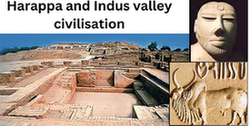Tuluva Dynasty
Tuluva Dynasty: (1505-1570)
The Tuluva dynasty had its origins in the western Tulu-speaking region.Its early ancestors were Thimmabhupathi and Devaki.Tuluva Narasa Nayaka, a mighty warrior, is credited with conquering the Gajapatis and some Muslim rulers.Krishnadevaraya, a Tulu speaker, ruled a linguistically diverse empire.The official language is Telugu.He wrote the epic poem Amuktamalyada in Telugu.The Tuluva rulers were devout Vaishnavas.Krishnadevaraya had Vyasatirtha, a Dvaita saint, as his family guru.The decline of the Tuluva dynasty marked the beginning of the decline of the Vijayanagara Empire.
Rulers of Tuluva Dynasty:
| Ruler | Rule |
| Narasimha Raya | 1505-1509 |
| Krishnadevaraya | 1509-1529 |
| Achyuta Deva Raya | 1529-1542 |
| Sadasiva Raya | 1542-1570 |
Veera Narasimha Raya (1505 – 1509 CE):Tuluva Dynasty
He ruled the Tuluva dynasty from 1505 to 1509. He is known as a religious king who gives gifts in holy places.He was victorious against the Bijapur and Gajapati.Legend has it that while dying in 1509, Vira Narasimha Raya asked his minister Saluva Thimma (Thimmarasa) to blind his younger brother Krishna Deva Raya so that his eight-year-old son could become the king of Vijayanagara.
Krishna Deva Raya (1509 – 1529 CE):
He was a powerful emperor of the Vijayanagara Empire.He ruled with the help of Prime Minister Thimmarusu.Krishnadevaraya is considered to be the greatest of the Vijayanagara kings. He fought against the Bahmani Sultans and the Gajapati kings of Orissa, won victories and expanded the boundaries of the kingdom.Krishnadevaraya made significant contributions to temples, adding tall gopurams along with many gopurams.Under his administration, the Nayak system was reorganized and this administrative structure was given legal sanction.
Achyuta Deva Raya (1529 – 1542 CE):
- In 1529 he succeeded his elder brother, Krishna Deva Raya.
- He reigned in challenging times when the days of peace and prosperity were over.
- The powerful Aliya contested for the throne with Rama Raya.
Sada Shiva Raya (1542 – 1570 CE):
He ruled in the 16th century following the death of his uncle Achyuta Deva Raya inAliya Rama Raya had a role in facilitating his Regent Salakam faced the challenges of Thimmu Raju but eventually ascended the throne with the support of minister Rama Raya.
Vijayanagara–Bahmani conflict:
From the beginning, Vijayanagara was in constant conflict with the Bahmani Sultanate.The struggle for territory, tribute and control of the horse trade sparked ongoing rivalries.While the religious rivalry between the Hindu Vijayanagara and the Muslim Sultanate contributed, Vijayanagara also fought Hindu rulers such as Warangal, Kondaveedu and Orissa. Control of the horse trade passing through ports like Goa added another dimension to the conflict. The Krishna River roughly divided parts of Vijayanagara and the Bahmani Sultanate.In coastal Andhra, the Gajapati kingdom of Orissa engaged in a power struggle.Vijayanagara faced challenges until the time of Deva Raya II (1422–46), who successfully expanded his kingdom against the Orissa army .However, after Deva Raya II, internal conflicts and incompetent successors weakened Vijayanagara.



Pingback: Vijayanagara Empire